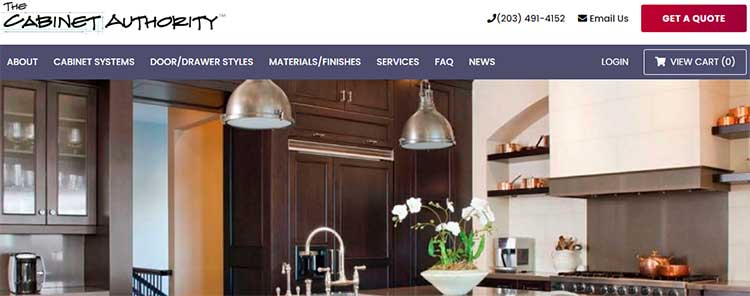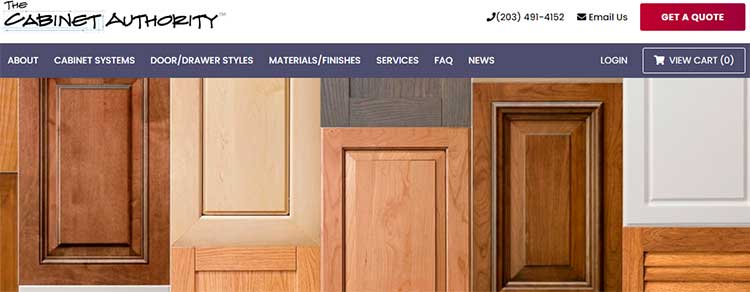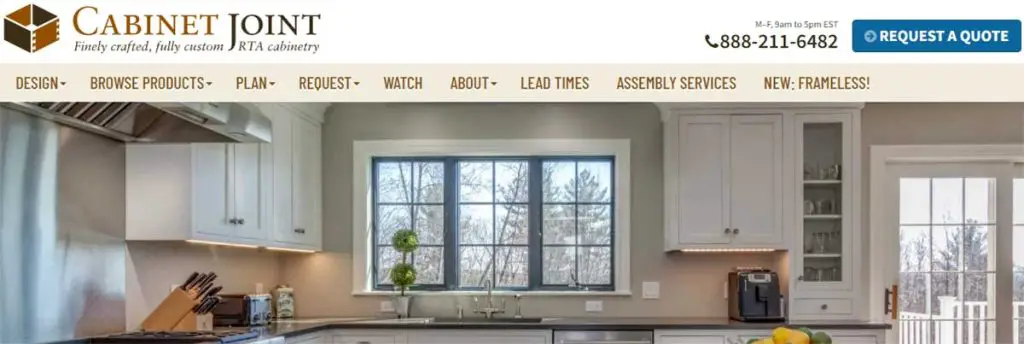When remodeling your kitchen or bathroom, choosing the right cabinets is one of the most important decisions. The construction technique used to build the cabinets impacts quality, cost, customization, ease of installation, and aesthetics. The two main methods are cabinet authority and cabinet joint.
This comprehensive guide will explain the key differences between cabinet authority and cabinet joint construction. We’ll compare quality of materials, durability, pricing, customization options, installation, and visual appeal.
You’ll also find an informative FAQ section answering common questions about cabinet types, construction, and quality. Read on for everything you need to know to determine whether cabinet authority or cabinet joint is the best choice for your next cabinetry project.
A Brief Comparison Table
| Aspects | Cabinet Authority | Cabinet Joint |
| Construction | Boxes and doors constructed separately then assembled | Entire cabinet constructed as single unit |
| Quality | Very high, rigid, durable | Lower than cabinet authority but solid |
| Cost | Expensive, premium | Affordable, lower cost than cabinet authority |
| Installation | Professional recommended | Easier for DIY |
| Aesthetics | More customizable options | Limited customization |
| Lead Time | 6-8 weeks | 2-3 weeks |
Cabinet Construction Techniques Compared
Cabinet construction falls into two main categories:
- Cabinet Authority Construction

Cabinet authority construction, also known as European or frameless construction, is considered the highest quality technique for cabinetry. Each component – the sides, top and bottom, back, doors, and face frames – are constructed separately using top grade plywood or solid wood. They are then assembled into a finished cabinet.
The separate construction allows for a highly rigid, sturdy box that won’t warp or twist over time. It also enables fully customizable sizing and layouts to perfectly fit your space. The precise joinery and engineering of cabinet authority pieces result in flawless alignment and seamless transitions between cabinets once installed.
Doors for cabinet authority cabinets are also constructed separately. They can be made from plywood, solid wood, or glass and attached to the cabinet boxes. You have endless options for door styles such as inset, partial overlay, full overlay, shaker, slab, and more. Drawers are dovetailed for superior strength.
- Cabinet Joint Construction
Cabinet joint construction involves building the entire cabinet, including sides, face frame, and doors, as a single welded unit. All components are fused together through joints, hence the name. The cabinet is constructed, finished, and assembled at the factory rather than on site.
This style is more limited in customization since sizing and layouts must conform to the manufacturer’s standards. The quality of materials is also lower, often using particle board instead of plywood or solid wood. Melamine laminate provides the finished surface.
That being said, cabinet joint construction remains a budget-friendly option. The units are solid and durable enough for most needs. The seamless, unified construction also lends a cleaner, more uniform aesthetic.
For DIYers, cabinet joint products are much easier to install. They ship as finished boxes you simply mount to the wall and add doors/drawers. The installation process for cabinet authority requires expertise to assemble and precisely align each piece.
Key Differences Between Cabinet Authority And Cabinet Joint
- Quality and Durability

The separate construction process of cabinet authority enables extremely high quality materials and joinery methods that aren’t possible with cabinet joint.
Each component – sides, top, bottom, back, doors, drawers – can be engineered to precise specifications and from premium materials like plywood and solid hardwoods. The strongest joinery techniques like dovetails ensure seamless alignments and rigid connections.
The box construction is highly durable and stable. It won’t twist, crack, or lose shape through years of use. The precise joinery also allows flawless cabinet-to-cabinet transitions for a custom fitted look.
With cabinet joint construction, the entire unit is built at once from lower grade materials like particle board or MDF. While solidly constructed, it cannot match the quality of cabinet authority. The materials are more prone to damage over a long lifetime.
- Customization and Aesthetics
The separateness of cabinet authority construction enables far more customization than cabinet joint in sizes, storage layouts, and door styles. The box dimensions can be tailored to make use of every inch. Drawer and shelf configurations are highly flexible.
For cabinet doors, you have endless options from simple shaker to elaborate raised panels and modern materials like glass. Each cabinet can have unique doors suited to its purpose. The appearance options are virtually unlimited.
Cabinet joint products must conform to the manufacturer’s standard dimensions and configurations. You are limited to what they offer in terms of sizes, shapes, storage options, and door styles. There is little room for customization besides small variations like color and finish.
Visually, cabinet authority also provides a more upscale, built-in custom look. The precisely aligned edges and seamless transitions between cabinets appear like they were designed for that exact kitchen.
Cabinet joint cabinets have a more generic, utilitarian appearance. The edges between units may not perfectly align. And you likely cannot modify cabinet placement because of the pre-determined size and shape.
- Cost and Budget
Not surprisingly, the superior materials, construction, and customization of cabinet authority come at a price. Cabinet authority is sold at premium prices, given the hand crafted quality. The budget for a kitchen or bathroom remodel must accommodate the higher costs.
Cabinet joint products provide an affordable alternative. Using lesser materials and more automated construction, manufacturers can sell these cabinets at a fraction of the price of cabinet authority. The budget-conscious will find greater value here.
If maximizing every dollar, cabinet joint provides decent quality and durability considering the lower cost. Those wanting the highest quality cabinetry as a focal point will find the investment in cabinet authority worthwhile.
- Installation and Assembly

Installing cabinet authority kitchen cabinets is best left to professionals. The separate construction means every component must be skillfully assembled and aligned on site before mounting to the walls. Expect installation to add several thousand dollars to the total project cost.
Cabinet joint cabinets ship as pre-assembled units only needing mounting. The installation process is straightforward enough for DIYers with basic skills. For those wanting to minimize labor costs, cabinet joint is by far the simpler option. No expertise is required.
This also means modifying or adding onto cabinet joint kitchens in the future is tougher. The unified construction leaves little flexibility. With cabinet authority, it is relatively simple to swap out or add new components like doors and drawers.
Pros of Cabinet Authority Construction
- Highest quality materials and joinery
- Durable, rigid, and stable for years of use
- Won’t warp, crack, or lose shape
- Flawless alignment between cabinets
- Fully customizable sizes, storage, and style
- Limitless options for cabinet doors
- Easier to modify down the road
- Premium fittings and hardware
- Custom built-in look when installed
Cons of Cabinet Authority Construction
- Most expensive cabinet option
- 6-8 week lead time for custom pieces
- Professional installation required
- Cannot be DIY project
- Upfront planning and precision required
Pros of Cabinet Joint Construction
- Most affordable cabinet option
- 2-3 week production times
- Ships ready for install
- DIY friendly installation
- More consistent, seamless look
- Pre-determined sizes fit most spaces
Cons of Cabinet Joint Construction
- Lower quality than cabinet authority
- Limited customization
- Modification not as easy
- Alignment issues more likely
- Made of particle board or MDF
- Melamine laminate prone to scratches
Also Read: Is Lily Ann Cabinets Better Than Cabinets To Go?
Frequently Asked Questions (FAQ)
Below are answers to some of the most common questions about cabinet construction types, differences, quality, and installation.
The two main types of cabinet construction are cabinet authority and cabinet joint. Cabinet authority entails building boxes, doors, and face frames separately before assembling into finished cabinets. Cabinet joint constructs the entire cabinet as one unified component.
While the terms are sometimes used interchangeably, a cabinet is typically box-shaped with doors and/or drawers and used for storage. A cupboard is an enclosed storage compartment without distinct shelves or drawers built into a wall or frame.
RTA (ready-to-assemble) wood cabinets can offer good quality and durability if constructed from plywood or real wood as opposed to particle board or MDF. Look for solid wood doors, dovetail joinery on drawers, and high-grade finishes. Well-made RTA cabinets installed properly can last many years.
Cabinetry relies heavily on joinery techniques like dovetails, mortise and tenon, dowels, etc to assemble the box components. Joinery using glue, nails, screws, or other fasteners is what allows cabinets and furniture to be constructed from multiple pieces of wood. So cabinetry qualifies as a complex form of joinery.
Wrapping Up
Whether cabinet authority or cabinet joint construction is best for your kitchen or bathroom remodel depends on budget, quality needs, customization desires, and DIY abilities. Cabinet authority offers unmatched quality and customization if you can accommodate the premium price and required professional installation.
Cabinet joint provides budget-friendly convenience for DIYers willing to accept some limitations in materials, customization, and long-term durability. Carefully examine your project requirements and cabinet options to make the right choice.
With either construction approach, invest in the highest quality materials and finishes you can afford. Quality cabinetry with proper care will serve you well for decades.
